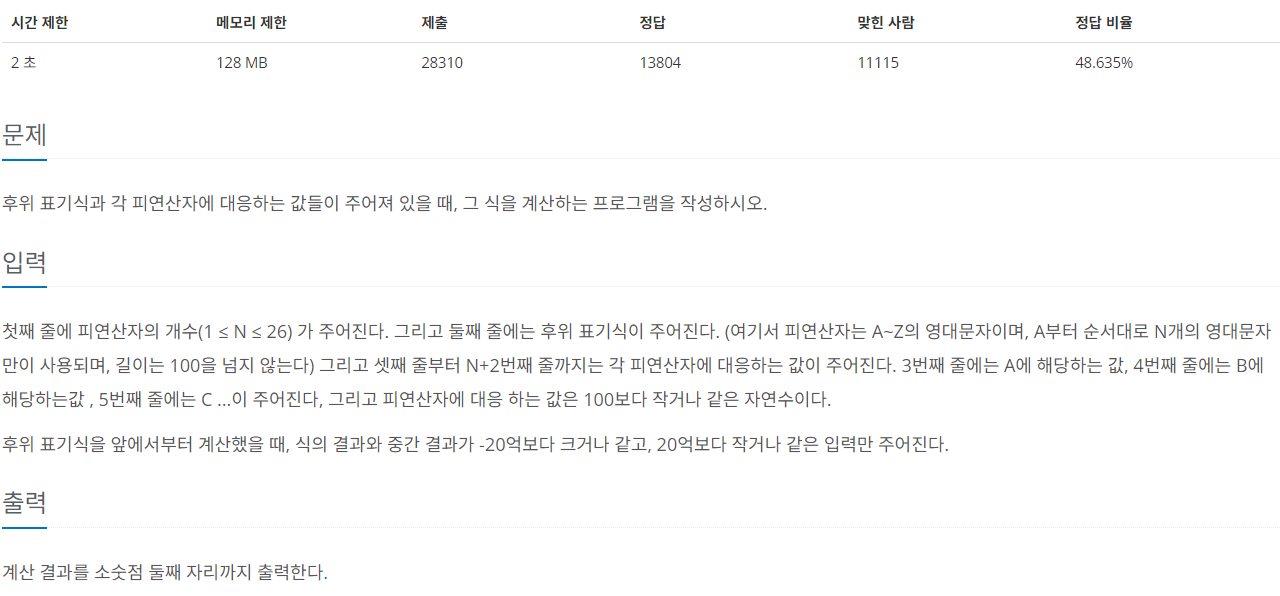[백준][1935] 후위 표기식 2
[백준][1935] 후위 표기식 2
이 포스트는 백준 사이트의 후위 표기식 2 문제 풀이입니다.
문제
해결 과정
이 문제는 stack을 사용하는 대표적인 문제입니다.
문제에서 후위 표기식과 피연산자에 대응하는 숫자가 입력됩니다.
후위 표기식은 연산자는 가장 가까운 피연산자 2개를 사용합니다.
예를들어, \((A + (B \times C)) - (D / E)\) 수식을 후위 표기식으로 표현하는 방법은 아래와 같습니다.
화살표의 방향에 따라 연산자들이 이동하고 변환된 결과는 아래와 같습니다.
\[ABC\times+DE/-\]이때, 피연산자를 stack에 넣어 가장 최근의 피연산자 2개를 가져오도록 하면
후위 표기식의 결과를 계산할 수 있습니다.
코드 구현
1
2
3
4
5
6
7
8
9
10
11
12
13
14
15
16
17
18
19
20
21
22
23
24
25
26
27
28
29
30
31
32
33
34
35
36
37
38
39
40
41
42
43
44
45
46
47
48
49
50
51
52
53
54
55
56
57
58
#include <iostream>
#include <vector>
#include <stack>
using namespace std;
int main()
{
ios_base::sync_with_stdio(false);
cin.tie(0);
int N;
string str;
cin >> N >> str;
int alpha[26];
for (int i = 0; i < N; ++i)
{
cin >> alpha[i];
}
stack<double> nums;
for (char c : str)
{
if (isalpha(c))
{
nums.push(alpha[int(c - 'A')]);
}
else
{
double head = nums.top();
nums.pop();
double tail = nums.top();
nums.pop();
if (c == '+')
{
head += tail;
}
else if (c == '-')
{
head = tail - head;
}
else if (c == '/')
{
head = tail / head;
}
else if (c == '*')
{
head *= tail;
}
nums.push(head);
}
}
printf("%0.2f", nums.top());
return 0;
}
실행 결과
이 기사는 저작권자의 CC BY 4.0 라이센스를 따릅니다.


